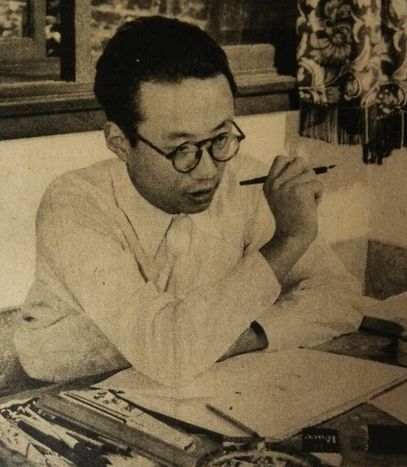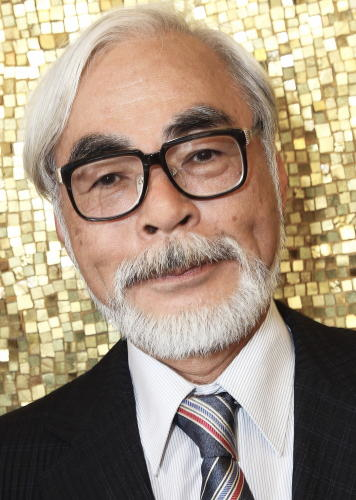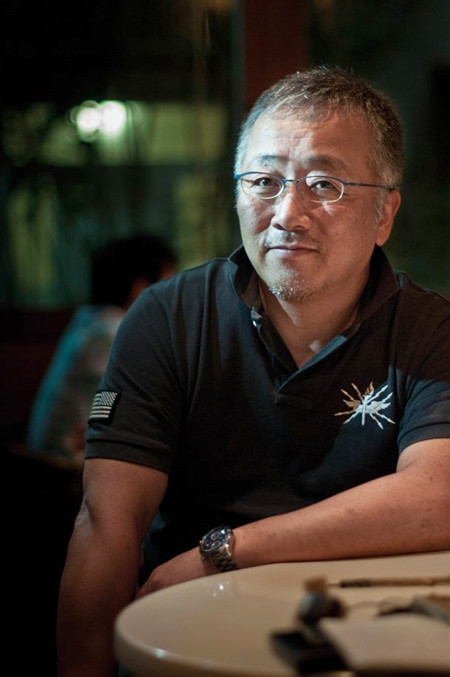Development
The history of anime began at the start of the 20th century. The first generation of animators in the late 1910s included Ōten Shimokawa, Jun'ichi Kōuchi and Seitaro Kitayama, referred to as the "fathers" of anime.[1] During World War II, propaganda films such as Momotarō no Umiwashi (1943) and Momotarō: Umi no Shinpei (1945) were made, the latter being the first anime feature film.
During the 1970s, anime developed further, separating itself from its Western roots, and developing distinct genres such as mecha and its Super Robot subgenre. Typical shows from this period include Lupin III and Mazinger Z. During this period several filmmakers became famous, especially Hayao Miyazaki and Mamoru Oshii.
In the 1980s, anime was accepted in the mainstream in Japan, and experienced a boom in production. The rise of Gundam, Macross, Dragon Ball, and the Real Robot, space opera and cyberpunk genres set a boom as well. The film Akira set records in 1988 for the production costs of an anime film and went on to become a success worldwide. Later, in 2004, the same creators produced Steamboy, which took over as the most expensive anime film. Space Battleship Yamato and The Super Dimension Fortress Macross also achieved worldwide success after being adapted respectively as Star Blazers and Robotech.
The internet also led to the rise of fansub anime. Spirited Away shared the first prize at the 2002 Berlin Film Festival and won the 2003 Academy Award for Best Animated Feature, while Innocence: Ghost in the Shell was featured at the 2004 Cannes Film Festival.
Three important people who influenced the Japan animation history:
Osamu Tezuka - 1928.
Osamu Tezuka - 1928.
Tezuka is known for his imaginative stories and stylized Japanese adaptations of western literature with reading novels and watching films that came from the West. His early works included manga versions of Disney movies such as Bambi.[20] Tezuka "cinematic" page layouts, influenced by Milt Gross' early graphic novel He Done Her Wrong which he read as child became a common characteristic for many manga artists who followed in Tezuka's footsteps.[21] His work, like that of other manga creators, was sometimes gritty and violent.
Tezuka headed the animation production studio Mushi Production ("Bug Production"), which pioneered TV animation in Japan.[22] The distinctive "large eyes" style of Japanese animation was invented by Tezuka, [23] drawing inspiration from Western cartoons and animated films of the time such as Betty Boop, Mickey Mouse and other Disney movies.

Hayao Miyazaki - 1941 .
Hayao Miyazaki - 1941 .
Miyazaki's works are characterized by the recurrence of progressive themes, such as environmentalism, pacifism, feminism, and the absence of villains. His films are also frequently concerned with childhood transition and a marked preoccupation with flight.[j]
Miyazaki's narratives are notable for not pitting a hero against an unsympathetic antagonist.
Miyazaki's films often emphasize environmentalism and the Earth's fragility. "Growing up in the Shōwa period was an unhappy time for him because "nature – the mountains and rivers – was being destroyed in the name of economic progress." Miyazaki is critical of capitalism, globalization, and their impacts on modern life. Commenting on the 1954 Animal Farm animated film, he has said that "exploitation is not only found in communism, capitalism is a system just like that. I believe a company is common property of the people that work there. But that is a socialistic idea."[54] Nonetheless, he suggests that adults should not "impose their vision of the world on children."

Katsuhiro Otomo - 1954.
Katsuhiro Otomo - 1954.
Katsuhiro Otomo is a Japanese manga artist, screenwriter and film director.In 1979, after writing multiple short-stories for the magazine Action, Otomo created his first science-fiction work, titled Fireball. He made his anime debut, working as character designer for the animated film.Otomo has recently worked extensively with noted studio Sunrise. The studio has animated and produced his recent projects including the 2004 feature film Steamboy, 2006's Freedom Project and his latest project, SOS! Tokyo Metro Explorers: The Next, released in 2007. Otomo said he will start a new manga series, set during Japan's Meiji period (late 1800's early 1900's). It will be his first long-form work since Akira.In 2013, Otomo released his newest film in over 9 years since Steamboy, called Short Peace, an anthology consisting on 4 shorts.

Different genres of animation:
| Genre | |
|---|---|
| 1. | Action Animation |
| 2. | Adventure Animation |
| 3. | BishounenAnimation |
| 4. | Comedy Animation |
| 5. | Demons Animation |
| 6. | Game Animation |
| 7. | Harem Animation |
| 8. | Horror Animation |
| 9. | School Animation |
| 10. | Sport Animation |
There are more classic animation series examples, check out these Examples!
There are more classic animation series examples, check out these Examples!